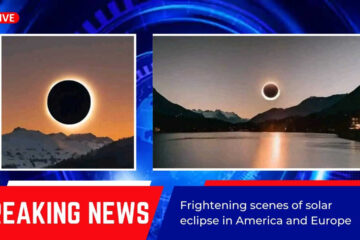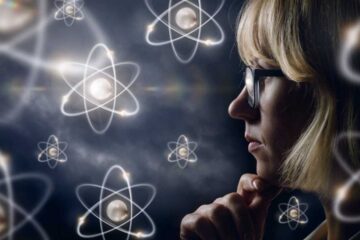Russia has recently embarked on its first lunar exploration mission in nearly five decades, joining a competitive race among global powers such as the United States, China, and India to delve deeper into the composition of Earth’s lone natural satellite.
Russian officials have expressed intentions to undertake subsequent lunar missions, with plans spanning from potential collaborative endeavors with China to crewed missions and even the establishment of a lunar outpost. Notably, NASA has coined the term “lunar gold rush” to describe the interest in lunar exploration, including the prospects of resource extraction.
Situated at a distance of 384,400 km (238,855 miles) from our planet, the moon plays a crucial role in stabilizing Earth’s axial wobble, thereby contributing to a more consistent climate. Furthermore, its gravitational influence is responsible for the oceanic tides experienced across the globe.
Present scientific consensus suggests that the moon formed following a colossal impact between Earth and a massive object roughly 4.5 billion years ago. The resultant debris coalesced to shape the moon as we know it today.
Key Areas of Interest for Global Powers on the Moon
Water
The discovery of water on the moon, primarily concentrated at its poles, was definitively confirmed in 2008 through India’s Chandrayaan-1 mission. Water on the moon holds immense value as it serves as a vital resource for sustaining human life and can also be harnessed for the production of hydrogen and oxygen, which in turn can be used as propellants for space exploration.
Helium-3
An isotope of helium that is rare on Earth, the moon is believed to contain substantial reserves of helium-3. This isotope has the potential to be utilized as a fuel source for nuclear fusion reactors, offering clean energy generation without the associated radioactive waste, according to assessments by the European Space Agency.
Rare Earth Metals
The moon is host to a variety of rare earth metals, including scandium, yttrium, and the 15 lanthanides, which hold significance in the production of advanced technologies like smartphones and computers. Boeing-sponsored research has confirmed the presence of these valuable materials on the lunar surface.
Prospects of Lunar Resource Exploitation
The operational mechanics of moon mining are not yet fully understood. Establishing infrastructure on the moon would be a prerequisite, with robots likely shouldering the bulk of extraction and processing activities. The presence of water on the moon could facilitate prolonged human habitation and operations.
Legislative and Legal Aspects
The legal landscape surrounding lunar resource exploitation remains uncertain. The 1966 Outer Space Treaty, overseen by the United Nations, stipulates that no nation can assert sovereignty over celestial bodies, emphasizing the principle of space exploration for the collective benefit of all nations. Nevertheless, ambiguity exists regarding the potential for private entities to claim lunar territories.
An additional legal instrument, the 1979 Moon Agreement, outlines that no entity, whether governmental or non-governmental, can claim ownership over lunar regions. Despite this, it has not gained widespread ratification among major spacefaring nations.
In 2020, the United States introduced the Artemis Accords, an initiative named after NASA’s Artemis moon program. The Accords seek to enhance existing international space law by establishing safety zones on the moon. Notably, Russia and China have abstained from joining this agreement.
In essence, the quest for lunar exploration and resource exploitation involves intricate scientific, technological, and legal dimensions, as major global powers navigate the challenges and opportunities presented by our celestial neighbor.




